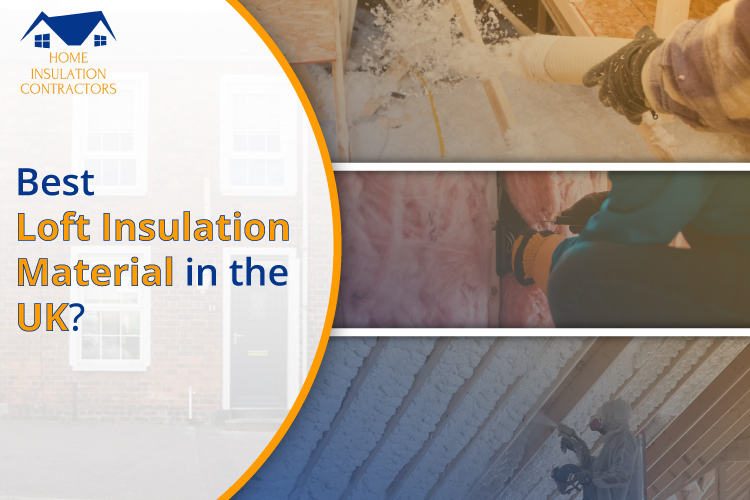Among the most crucial zones of loft insulation, one can install in the house is the loft. Our lofts are among the spots where heat loss is most likely to occur, and by simply depositing a thin layer of spray foam insulation, one can reduce this loss, lower the carbon footprint, and maximise the return on investment while increasing the property’s value.
In supplement to monthly energy bill savings, insulate your loft to raise the value of your property abruptly with spray foam insulation which is among the leading and best loft insulation materials available in the market.
Loft insulation can increase the energy efficiency of about any house resulting in annual savings of up to £250 from loft insulation.
We at Home Insulation Contractors can supply suitable insulating barriers on everything with instant Bespoke Quotes for floor, loft and warehouse insulation because we are a certified and authorized installer in the industry with a leading range of insulation solutions.
Focusing on insulation, we maintain a high degree of expertise in spray foam products and are well-versed in insulation kinds, installation techniques, and where to employ each.
Spray Foam: Best Loft Insulation Material
One of the best types of loft insulation material now easily accessible is spray foam insulation. It can get into any cracks and crevices in your loft and the rafters of the loft because of its spraying action and its expanding tendency.
As a result, your property has a formation of a solid insulating structure and an efficient airtight seal. Spray foam insulation can significantly reduce your heating and cooling expenses by as much as 50%, a figure that is unlikely to be reached if you employ other conventional forms of insulation.
Despite being more premium and costly than other options, spray foam insulation is a worthwhile investment because of what it can accomplish for you.
Using spray foam insulation for your loft columns and beams will produce an excellent heat-resistant and protective layer in addition to increasing the value of your property and lowering your monthly energy costs.
Your expectations will be met by using foam insulation, which is also environmentally friendly, has high-temperature resistance, offers soundproof qualities, and encloses all regions, especially when using open-cell spray foam insulation. it is gas-free, has fewer chemicals and inhibits the growth of mould and condensation, and does a lot more.
Spray foam is a more modern sort of insulation, although cellulose has advantages as well. Paper pulp is combined with a fire retardant called borate to create cellulose. An insulation blower is used to apply the paper composition after it has been broken into cellular fibres.
However, because cellulose insulation is blown in, a lot of dust is produced, and the paper structure is weaker than it would be if you were to use a more substantial foam alternative. In contrast to absorbing moisture over time, cellulose weakens and performs worse, exposing the insulant to mould spores and eventually start decomposing.
Fibreglass insulation is yet another insulant we’ll explore for insulating your loft. Glass fibres used in fibreglass insulation are utilised to trap air bubbles, resulting in an insulating effect by delaying the transfer of heat between surfaces and spaces. Due to the fact that it must be cut into the required shapes, this type of loft insulation is sometimes characterized as blanket loft insulation or batt insulation.
However, choosing fibreglass insulation for the loft comes with a few drawbacks. Because the fibreglass substance irritates the skin and the insulation roll is prone to sink and sag with time, it is necessary to wear protective clothing before installation.
While there are many multiple kinds of insulation you may use for the loft, spray foam, cellulose, and fibreglass are the most prominent and are advised as your first choices for your projects. Finding the correct insulation, nevertheless, depends on the goals you want to achieve, be they financial, environmental, self-installation, noise pollution reduction, or anything else.
Advantages of Installing Loft Insulation
- Use a Zero-VAT product to insulate, secure, and maintain your investment.
- 90% Less heat loss due to thermal barrier and air leakage
- Experience a short payback period; some clients claim a 50% reduction in energy costs.
- Improve your home’s EPC rating while protecting the environment.
- The least obtrusive insulating technique is spray foam. The installation process is simple, quick, and clean.
- Using our acclaimed breathable spray foam insulating materials, keep complete ventilation in the loft.
- Retaining your home’s heat helps combat global warming by lowering carbon emissions.
Conclusion
Insulating a loft could be quite risky. Falling through the roof or from the loft hatch is extremely dangerous and may be fatal because they are often not made for people. Our experts are completely equipped with safety gear that you wouldn’t want to purchase for a single task. They have had complete training, and we have comprehensive insurance for spray foam loft insulation.
As professionals in the field, we do advise using spray foam insulation because it satisfies the majority, if not all, of the requirements that most homes have. If you’re interested, get in touch with us right away to schedule your free appointment.


